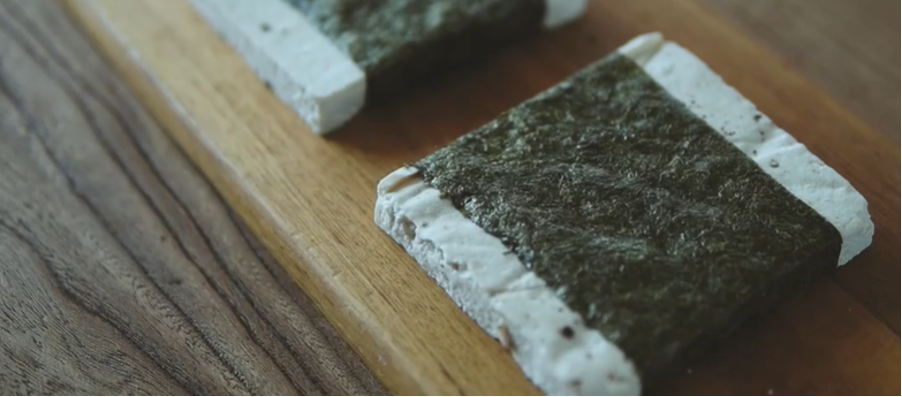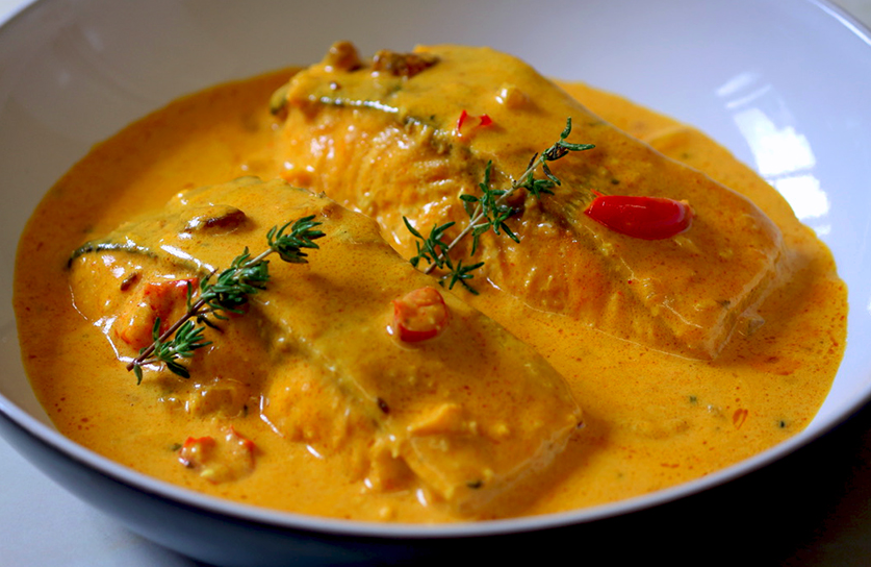As part of a new initiative to enhance international students’ experience at Birkbeck, our students and staff will be sharing their favourite recipes over the next few months in a series of blogs. In this blog, Meiyun Meng, MPhil Geography, Environment and Development Studies student, shares her recipe for fake-fried tofu steak.
Background: I would like to share my way of making a tofu dish. My inspiration for this dish came from a video on Bilibili (Chinese YouTube). This YouTuber mainly makes vegan dishes.
My recipe is a rookie-friendly and vegetarian version of his. It can be a part of a main dish (serve with rice or Korean shin ramen).
Ingredients:
- 1 pack of firm tofu (the firmer, the better), around 200g. Please try to buy it in Asian supermarkets. Buy tofu packed in a plastic box from Korea or China. Do not use soft tofu or tofu in juice boxes!
- Some salt and pepper (according to your preference).
- 1 piece of sushi nori (basic dried seaweed). Or you can use Korean snack seaweed but bear in mind they are salted.
- Some breadcrumbs – make sure that your tofu can be fully covered. I know breadcrumbs can be expensive. To save money, grab some sliced bread (not the ends) and add it into your mixer. There you go, home-made breadcrumbs!
- Some wheat flour (both self-raising and plain flour will do)
- 2 teaspoons of oil (cheap or expensive olive oil will be fine)
- 1 egg (this is why this recipe became a vegetarian version. The original vegan recipe mixes 1 cup of overnight-soaked cashew nuts and water to replace the egg. You can try this if you want. Or, if you are not a vegan, you can simply buy eggs and start making delicious tofu steaks now!)
Cooking time: food prepping 15 minutes, roasting 20 minutes. Around 35-40 min in total.
Cooking method:
- Pre-heat the oven to 200 degrees.
- Crosscut the taller tofu cube into two shorter tofu steaks.
- Season two tofu steaks with some salt and pepper (on the front and back).
- Cut the square sushi nori into three rectangular pieces. Use two of them to respectively wrap two tofu steaks (see photo below). You can eat the last piece or put it back.
- Place your breadcrumbs into the pan, and add some salt, Chinese spices and oil into the pan. Heat it on a medium heat (don’t burn the breadcrumbs) until they turn to a darker brown (don’t forget to stir them occasionally to avoid burning).
- Crack the egg onto a plate. Place some flour on another plate. Put one tofu steak in with the flour. Once the tofu is powdered, soak it into the egg (make sure it is covered with eggs). Then put the tofu into the breadcrumbs pan and use dried breadcrumbs to fully cover the steak. Put the prepared tofu steak on the roasting tray (you can put aluminium foil on the tray).
- Repeat step 5 with the second tofu steak.
- Put the tray in the oven. Wait for 12 minutes and then flip the tofu steaks. Let them roast for another 7 minutes.
- Carefully take them out and enjoy!
Tip: You can eat it with tartar sauce, mayonnaise, ketchup or home-made curry
Further Information






